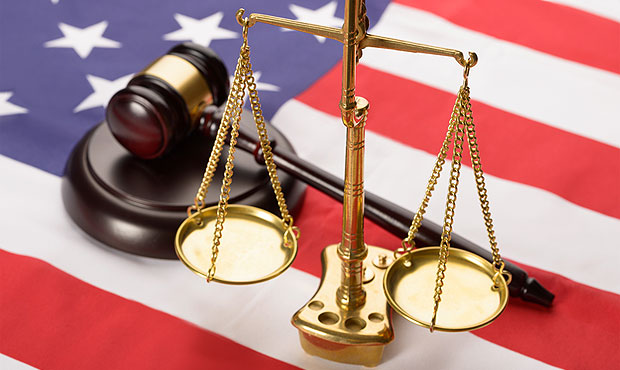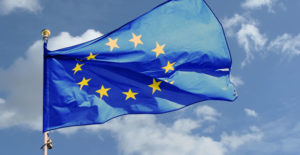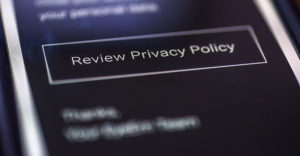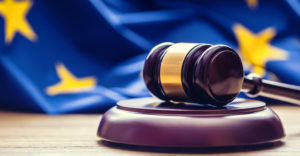A legal dispute between Google and Oracle over software copyrights has now been decided, with the U.S. Supreme Court ruling in favor of Google. The Court’s decision in Google LLC v. Oracle America Inc. was released on April 5, 2021.
The decision ended 10 years of tortuous litigation. While the Court definitively addressed the dispute between the two high-tech giants, it put aside answering one critical infringement factor. Still, the ruling appeared to reduce the legal leverage available to software developers who seek copyright protection.
Oracle contends the decision could have a chilling effect on copyright protection. “The Google platform just got bigger and market power greater — the barriers to entry higher and the ability to compete lower. They stole Java and spent a decade litigating as only a monopolist can. This behavior is exactly why regulatory authorities around the world and in the United States are examining Google’s business practices,” said Dorian Daley, executive vice president and general counsel at Oracle.
The case centered on Google’s use of portions of Oracle’s Java code in the development of Google’s Android technology. The long journey of the dispute actually started after Google acquired Android in 2005. “To allow the millions of programmers” who were familiar with the existing Java SE programming language to work with its new Android platform, “Google copied roughly 11,500 lines of code from the Java SE program,” according to the Supreme Court’s case summary.
Android Development Triggered Code Copying
Litigation began in 2010 after Oracle acquired Sun Microsystems, the originator of the Java program. When discussions between Oracle and Google over the use of Java failed, Oracle initiated the litigation with a suit against Google, claiming that Google had violated both patent and copyright protections related to Google’s use of the “declaring” Java codes. Potential damages were estimated at $8 billion.
The copied lines are part of a tool called an application programming interface or API, which allows programmers to call upon “prewritten” computing tasks for use in their own programs.
Over the course of protracted litigation, the lower federal courts considered two basic issues. The first was the issue of legal ‘copyrightability’ — that is, whether Oracle, as the owner of Java SE, actually had the legal right to claim protection for the code in the first place.
The second was that assuming Oracle’s Java SE did enjoy copyright protection, whether Google was exempted from honoring that protection by virtue of the “fair use” legal principle.
Fair use is a legal doctrine that promotes freedom of expression by permitting the unlicensed use of copyright-protected works in certain circumstances, according to the U.S. Copyright Office. As guidance, the office uses four ‘fair use’ factors. The Supreme Court essentially ruled that Google qualified for the exemption because it complied with the copyright office criteria.
The litigation bounced between federal district and appeals courts, with decisions in favor of each party at various stages. Eventually, a federal circuit court of appeals found that Google’s use of the relevant portions of Java code was not permissible. Google then appealed to the U.S. Supreme Court, contending that software interfaces are not entitled to copyright protection and that, even if they were, Google’s use of the Java APIs would constitute fair use.
The Supreme Court, applying the four factors, agreed with Google and said Google’s use of the code did not violate copyright protections.
Why Google Won, Lessons Learned
While the Supreme Court’s 36-page ruling included detailed descriptions of programming technology and related legal concepts regarding “fair use,” the decision essentially boiled down to the Court’s conclusion that Google’s use of the Java code served more of a functional and operational purpose rather than the hijacking of an original and creative work.
The Court asserted that the portion of the Java code at issue, categorized as declaring code, was far at the legal margin of an acceptable original and protected work.
Instead, the Court reasoned that the Java code used by Google was “inherently bound together with uncopyrightable” technology for the creation of a new expression and thus permissible as fair use under the four factors criteria. By use of an API, the Java code essentially morphed into a functional form, which allowed Google to adapt it for Android purposes.
Also, the Court held that Google’s use was “transformative” because it offered programmers a tool for creating additional software programs — for a “further purpose or of a different character” — which themselves could become eligible for copyright. That building block nature of the use was well within legally permissible bounds, the Court reasoned.
Regarding other factors, the Supreme Court determined that Google’s use had virtually no negative impact on Oracle’s market for Java. Lastly, the court observed that Google used only the portion of the Java code that was necessary for the Android project. The 11,500 lines of code at issue amounted to a small fraction of the 2.8 million lines of Java code, the court noted.
Blueprint for Fair Use Defense
The Supreme Court’s decision was somewhat of a mixed bag. For example, the Court consciously declined Google’s request to address whether or not the Oracle software was actually “copyrightable” at all.
To do so would have required the Court “to articulate a clear standard, which in turn would serve as a threshold” for all future software copyright cases, said David Herrington, a partner at Cleary Gottlieb. “But it was clear from oral argument that several justices struggled with how to draw that line,” he told the E-Commerce Times.
On the ‘fair use’ issue, the Court noted that such cases are highly specific in terms of the facts and the circumstances of each different case, with the implication that outcomes could differ as well.
In a direct legal sense, that may be true, according to Herrington. But at the same time, the Google-Oracle decision is “broadly impactful” because it capitalizes on fair use as a “robust defense” for parties accused of copyright infringement, he said.
“In one of the most interesting passages of its opinion, the Court spelled out how fair use can come into play in a way that should serve as a road map for defendants seeking to develop this defense,” Herrington said. Thus, defendants in a copyright case are well advised to not only focus directly on copyright law but also include fair use as a key element of their legal strategy, he noted.
For a plaintiff seeking copyright protection, the Court’s decision “will be seen as erecting another hurdle to overcome,” Herrington said.
Win for Software Devs
Others are more emphatic about the benefits of the Supreme Court decision in opening up access to various software offerings. For example, the Computer and Communications Industry Association (CCIA) has advocated in favor of more openness for decades and filed an amicus brief supporting Google in the Supreme Court case.
“After years of legal wrangling on this issue, the Supreme Court has confirmed that using limited amounts of functional code to promote interoperability is fair use, not infringement,” CCIA president Matt Schruers told the E-Commerce Times.
“This is a significant win for software developers now and future innovators that want to enter the market with competing products without having to negotiate a license with the very company that they would be competing with,” he noted.






















































Social Media
See all Social Media